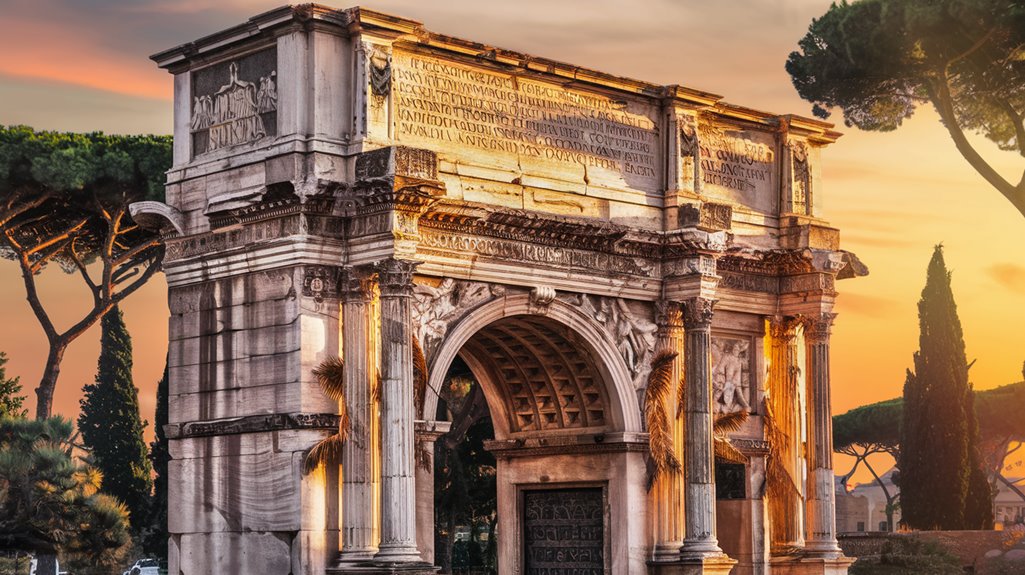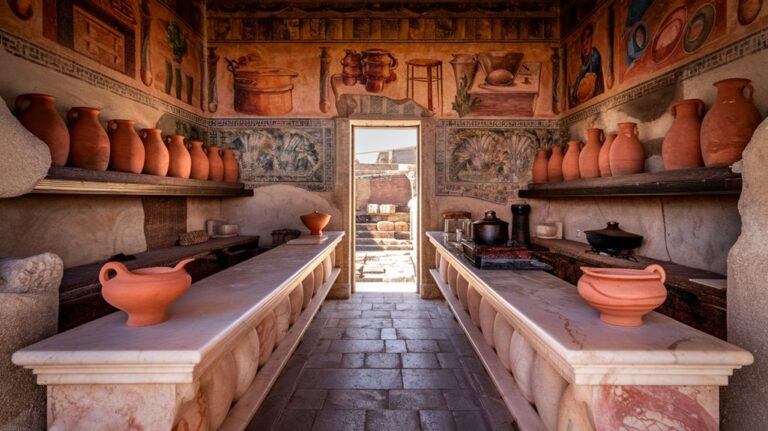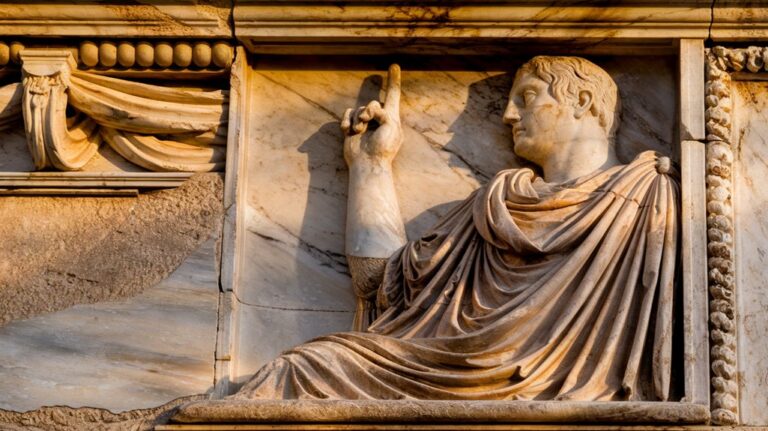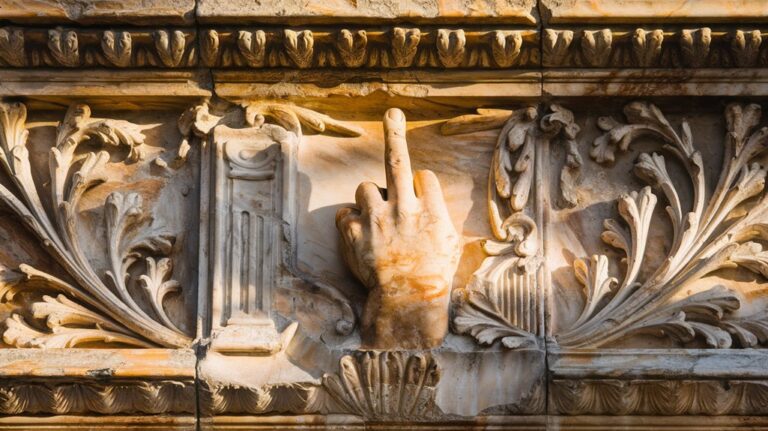Palm Trees Symbolized Victory in Ancient Rome
You might be surprised to learn that ancient Romans weren't just skilled at conquering territories – they had a particular fondness for botanical symbolism. When you think of palm trees today, you'll likely picture tropical beaches or desert oases, but these majestic plants meant something far more significant in Roman times. They've marked countless victories, from battlefield triumphs to athletic achievements, and their influence on Roman society runs deeper than you'd expect. Let's explore why these evergreen giants became Rome's ultimate victory symbol.
The Rise of Palm Symbolism in Roman Culture
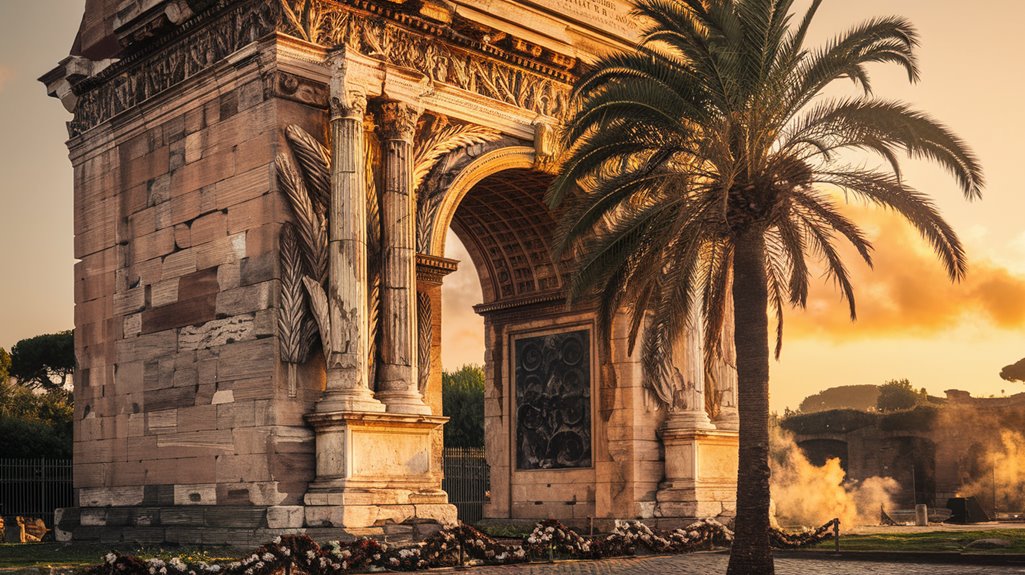
Symbols of victory stood at the heart of Roman cultural expression, and none was more prominent than the palm.
You'll find its cultural significance deeply rooted in Greek athletic traditions, where victors received palm branches as early as 400 BC. The Romans enthusiastically adopted this practice around 293 BCE, integrating palm mythology into their own customs.
The palm's influence extended throughout Roman society. Rome's military campaigns and conquests from the British Isles to the Middle East helped spread palm symbolism across the empire. Roman coins frequently depicted palms alongside conquered territories, particularly in the Judaea Capta series.
You'd see it adorning the doors of successful lawyers, decorating the toga palmata of triumphant generals, and appearing in countless artworks and coins. The symbolism was so powerful that the Latin word "palma" became synonymous with victory itself.
Even in early Christianity, you'll notice how the palm branch evolved to represent spiritual triumph, demonstrating its enduring impact on Roman religious and cultural life.
Military Triumphs and Palm Branch Traditions
When Roman generals returned victorious from battle, palm branches marked their triumphant processions through the streets of Rome.
You'd see victorious leaders wearing the tunica palmata while palm fronds decorated homes and public spaces along their parade route. The palm branch significance in these Roman military celebrations traced back to 293 BCE, representing both victory and eternal life.
You'll find this powerful symbol on Roman coins and artwork, closely tied to the goddess Nike (Victoria).
What's fascinating is how the palm branch's meaning evolved beyond military triumph. It became a symbol of victory over death itself, later influencing Christian traditions. The Romans' palms-as-victory symbolism directly influenced how martyrs' palm branches came to represent spiritual triumph over death in early Christianity.
In fact, you can still see this ancient Roman custom echoed today in Christian Palm Sunday celebrations, where palm branches retain their ceremonial importance.
From Athletics to Law: Palm Trees as Victory Emblems
Beyond military triumphs, palm trees held deep significance in other domains of Roman society. You'd find palm branches adorning the doorways of successful lawyers, who proudly displayed these symbols to announce their legal victories. This tradition stemmed from the Greeks, who first used palm trees to represent athletic achievement around 400 BCE. Drawing from ancient Egyptian influence, Romans incorporated palm capitol designs into their architectural elements.
When the Romans adopted this practice in 293 BCE, they expanded its meaning beyond sports. The palm's unique ability to resist pressure made it a perfect symbol of victory, as noted by ancient writers. You'll notice palm trees weren't just symbolic gestures – they became integrated into architectural significance throughout Roman buildings and public spaces.
From courtrooms to athletic venues, palm motifs served as powerful reminders of triumph and excellence. Whether you were a victorious athlete or a triumphant lawyer, the palm tree stood as Rome's universal emblem of success.
Early Christian Adoption of Palm Tree Symbolism
Through their search for meaningful symbolism, early Christians found profound significance in the palm tree, transforming it from a Roman victory emblem into a powerful representation of spiritual triumph.
Historical records indicate that loyal subjects honored kings and royalty by waving palm branches during processions. You'll find that early Christians connected palms to Biblical references like Psalm 91:13, which declares "The just shall flourish as the palm." The symbol became especially linked to Christian martyrdom, representing the victory of spirit over flesh and the triumph over death through resurrection. Ancient cultures often used palm branches to welcome conquering heroes home.
When you examine medieval interpretations, you'll see how the symbolism evolved further. Church scholars like Pope St. Gregory viewed the palm as the Tree of Life, while its evergreen nature represented the Church's enduring strength.
Today, you'll still encounter this symbolism during Palm Sunday celebrations, continuing a tradition that spans nearly two millennia.
Artistic Legacy of Roman Palm Tree Imagery
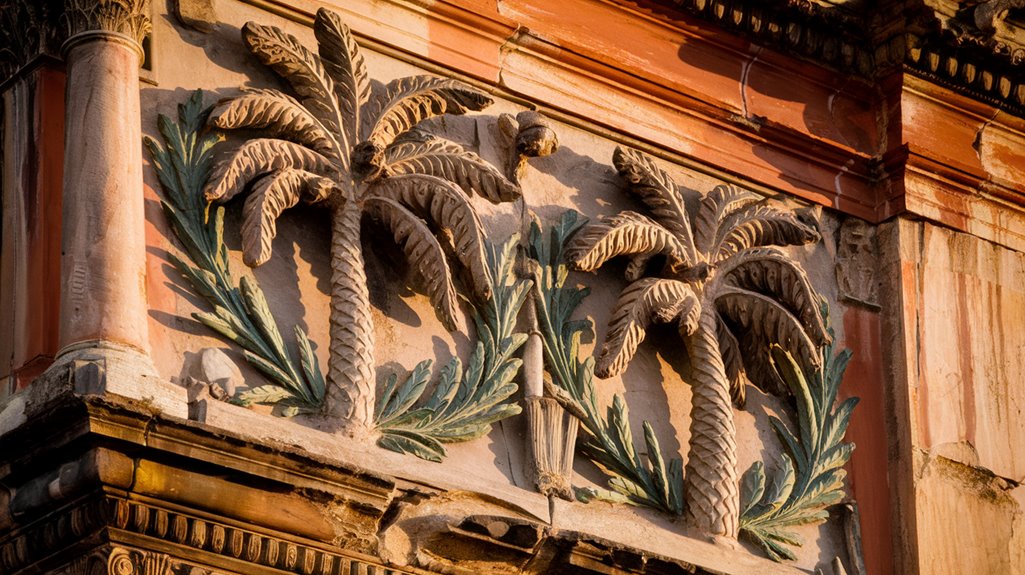
The artistic legacy of Roman palm tree imagery spans far beyond religious symbolism, permeating every aspect of Roman visual culture.
You'll find palm motifs adorning victory monuments, arches, and the celebrated toga palmata worn during military triumphs. Artists employed various artistic techniques to incorporate palm branches in their work, from intricate mosaics to detailed sculptures. Military commanders were honored with palm branch awards after successful campaigns.
Roman coins prominently featured palm branches as symbols of victory and peace, while painters like Mathieu Le Nain and Luca Giordano depicted the goddess Victory holding palm fronds. Greek warriors traditionally carried palm branches to honor Apollo. This rich visual tradition influenced later cultures, as the palm tree's association with triumph and success became deeply embedded in Western art.
The symbol was so powerful that victorious lawyers would decorate their doorways with palm branches, and architects integrated palm tree designs into temples and public spaces.

